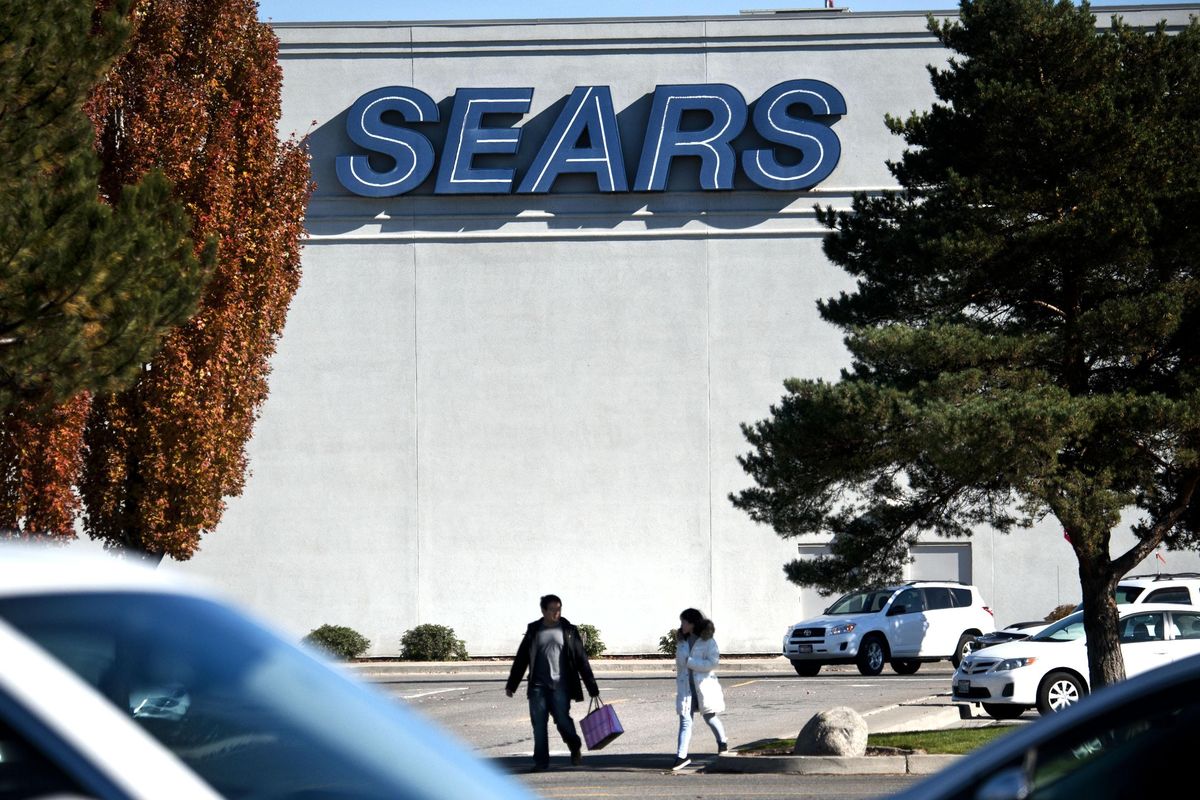The Sears bankruptcy: Locals lament company’s decline, even if they’ve become infrequent shoppers at the one-time retail giant

After Dennis and Cathie Stuhlmiller heard Sears had filed for bankruptcy, the couple made a point of strolling through the Spokane Valley store Monday morning.
Sears was one of their first credit cards as a newly married couple. They bought school clothes for their kids there, and Dennis Stuhlmiller outfitted his workshop with lifetime-warranty Craftsman tools purchased at Sears.
“We grew up with Sears,” Stuhlmiller said, recalling how he and his seven siblings paged through the Sears catalog at Christmas. “We wore that thing out.”
But the couple are no longer regular Sears shoppers. Other retailers – Best Buy, Kohls and Costco – carry many of the same items, said Cathie Stuhlmiller. And those retailers are closer and more convenient for the retired Spokane Valley couple to shop at, she said.
Plagued by falling sales and heavy debt, Sears Holdings filed for Chapter 11 bankruptcy reorganization early Monday and announced plans to close 142 of its 700-plus remaining stores and eliminate thousands of jobs in a bid to stay afloat, if only for a while.
Neither the Sears at the Spokane Valley Mall nor the NorthTown Mall Sears are on the list of stores slated for closure. Sears Holdings also operates Kmart stores, and no local Kmarts are listed for closure, either.
But analysts have their doubts about whether the brands will survive.
“In our view, too much rot has set in at Sears to make it (a) viable business,” Neil Saunders, managing director of GlobalData Retail, said in a note to investors.
From its beginnings as a mail-order watch business in Minneapolis 132 years ago, Sears grew to become America’s everything-under-one-roof store and the biggest retailer in the world.
For generations of Americans, the Sears, Roebuck and Co. catalog was a fixture – advertising toys and clothes and furnishings and hardware. The Sears brand loomed as large over the corporate landscape as its 108-story headquarters did over the Chicago skyline.
“It was the Amazon of its day,” said Mark Cohen, a professor of retailing at Columbia University and a former Sears executive.
Sears was an innovator in practically every area, including home delivery, product-testing laboratories and employee profit-sharing. When post-World War II prosperity led to the growth of suburbia, Sears cashed in on another major development – the shopping mall.
Analysts said the bankruptcy was years in the making.
Sears lost its footing in the 1980s with expansions into financial products such as banking, mortgages, insurance and credit cards. Walmart supplanted Sears as the biggest retailer in the early 1990s.
Sears kept cutting costs and let its stores become fusty in the face of increasing competition from the likes of Walmart and Target. And though it expanded onto the internet, it was no match for Amazon.
In its bankruptcy filing, Sears Holdings listed assets of $1 billion to $10 billion and liabilities of $10 billion to $50 billion. Company officials said they have lined up $300 million in financing from banks to keep operating and are negotiating an additional $300 million loan.
“Anytime we lose a monument to the history of the U.S. – in this case the business history – it’s a sad thing,” Dennis Stuhlmiller said.
The last major purchase he and his wife could recall making at Sears, however, was about 20 years ago. They bought a treadmill that’s still operating, Cathie Stuhlmiller said.
The company once had around 350,000 employees; as of Monday’s filing, it was down to 68,000. At its peak, it had 4,000 stores in 2012; it will now be left with a little more than 500.
At the Sears in the Spokane Valley Mall, a sign indicated the store was hiring. A kiosk in the store encouraged shoppers to order goods online and pick them up at the store to receive free shipping.
Like the Stuhlmillers, Kathy Hatcher was once a regular Sears shopper. The Post Falls resident bought clothes for her kids at Sears when they were little, and clothing for herself.
Now, however, she’s more likely to shop at Walmart, Target and CJ Banks. She was looking for jeans and new blouses on Monday, and she was headed to CJ Banks at the Valley mall.
“Sears got more expensive,” Hatcher said, “and their styles weren’t as up to date.”
Evan Jordan was visiting the mall with his sister and nephew. The Lewiston resident called himself an infrequent Sears shopper. He’s loyal to the Craftsman brand of tools sold by Sears.
“When they break, you return them and they replace them,” Jordan said.
He also likes Sears’ large selection of Levis. In other stores, Jordan said he was trouble finding Levis in his size.
At the Kmart store on East Sprague Avenue, about two dozen cars filled the parking lot Monday morning. Traffic in and out of the store was steady. Clothing, shoes and fine jewelry was on sale for up to 50 percent off.
Terri Miller, of Airway Heights, had brought her mom, Joanne Walker, of Davenport, to shop for winter clothing and puzzles. Both women said they like Kmart’s clothing styles and affordability.
“We shop here about once a year, usually in October,” Miller said. “We used to shop at Sears, but they’ve gotten very expensive.”
Many brands now specialize in particular parts of the market, and there aren’t many stores that are seeking to serve everyone, said Marc Levinson, author of “The Great A&P and the Struggle for Small Business in America.”
“And so Sears was stuck there in the middle at a time when the market was fragmenting,” he said.
Eventually, Sears will disappear, said Cohen, the retail professor
“It’s an American tragedy,” he said. “It did not have to be this way.”
The Associated Press and Bloomberg contributed to this report.